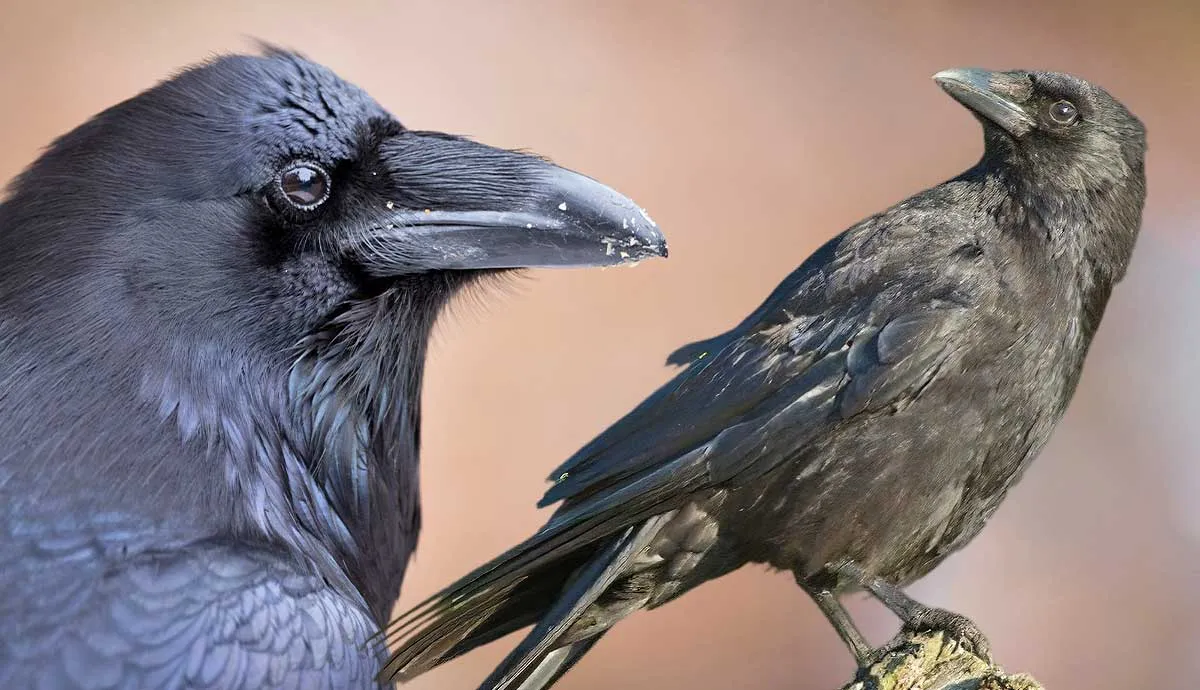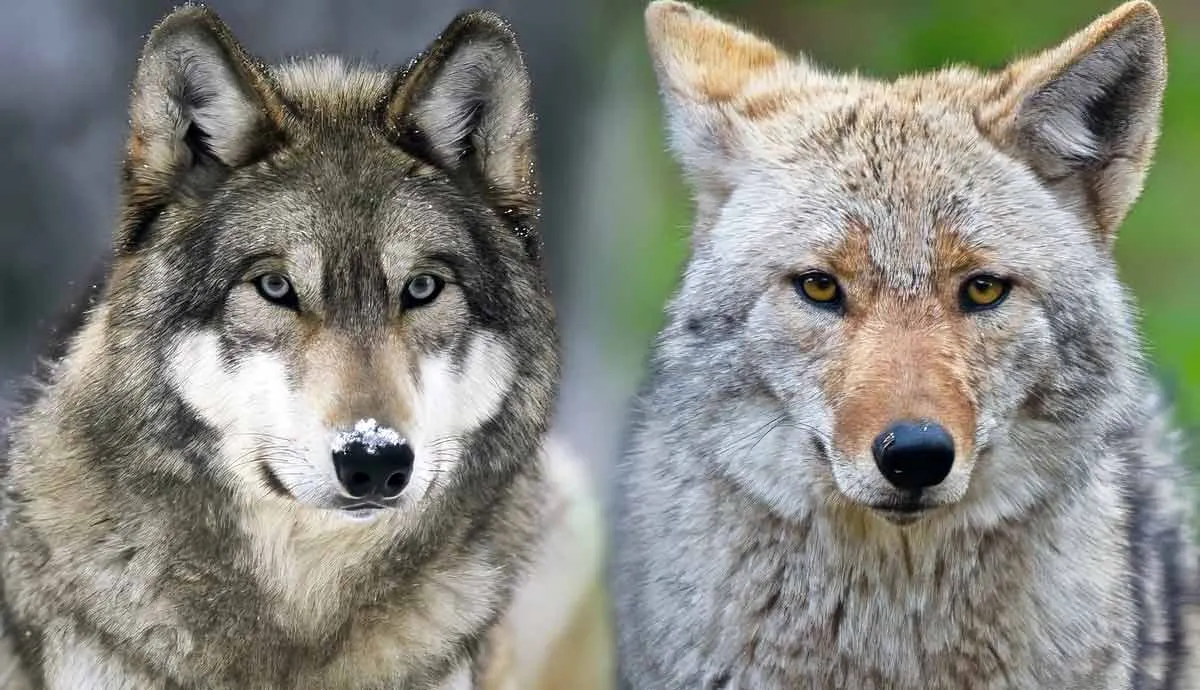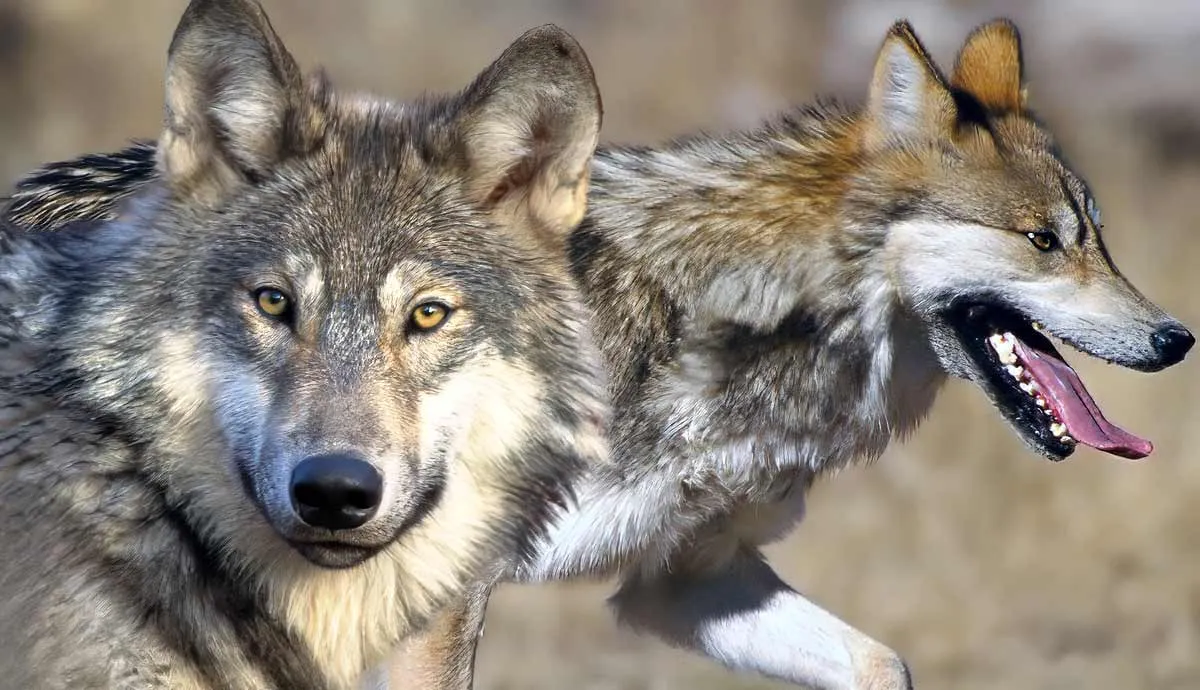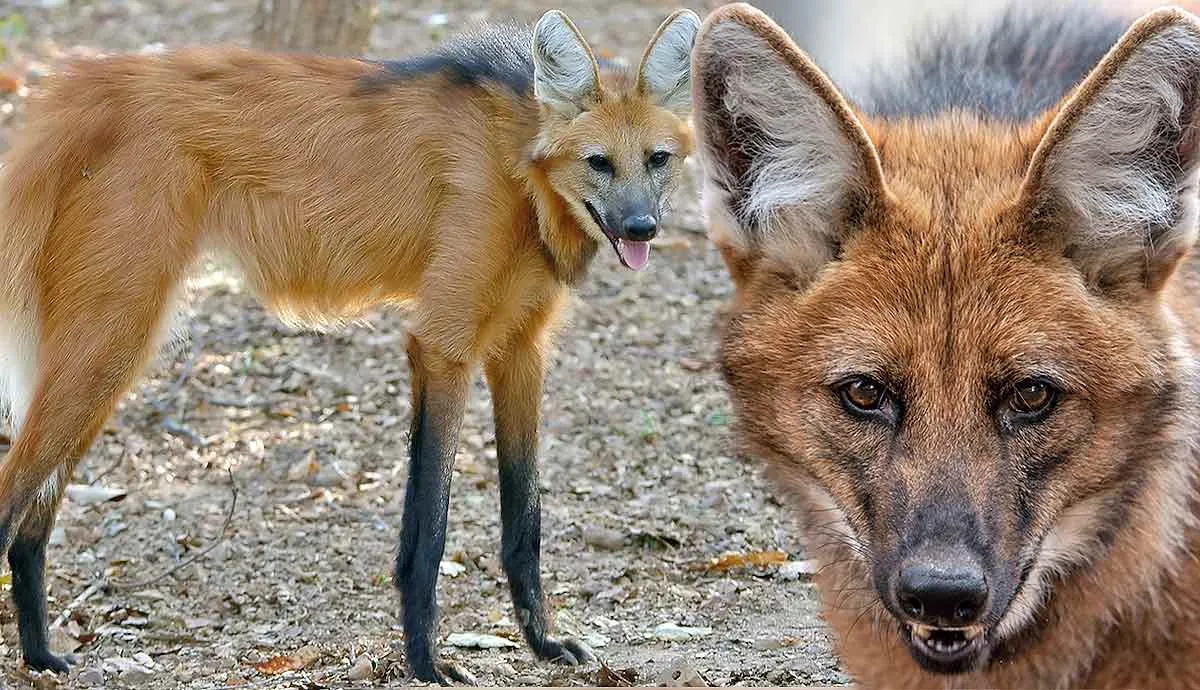The natural world is filled with extraordinary relationships, and one of the most captivating alliances exists between wolves and ravens. These two remarkable creatures have forged a unique symbiotic relationship that spans centuries. Dive into the intriguing dynamics of this alliance, exploring the mutual benefits and fascinating behaviors that characterize the bond between wolves and ravens.
Mutual Benefit
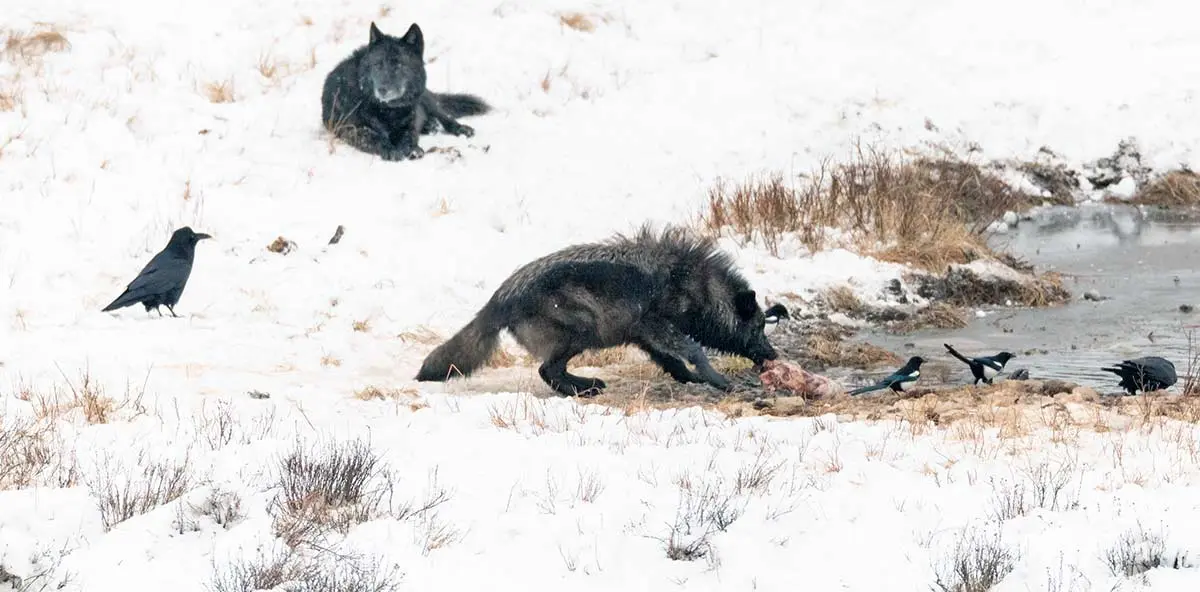
The partnership between wolves and the common raven (Corvus corax) is based on the principle of mutual benefit, or symbiosis. As skilled predators, wolves leave remnants of their kills, creating an abundant food source for opportunistic ravens. Ravens provide invaluable help to wolves by acting as scouts and messengers. Their keen eyesight and ability to soar over great distances enable them to spot potential prey or threats. Through their calls and behavior, ravens alert the wolves to these discoveries, allowing the pack to maximize their hunting success and protect their territories.
Communication and Cooperation
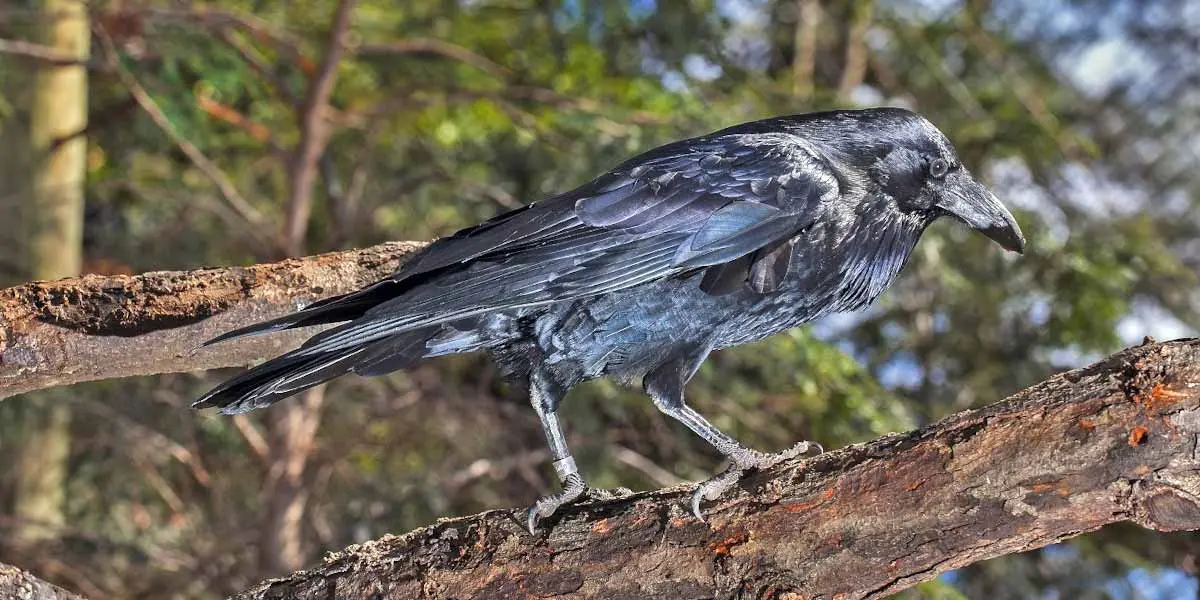
Wolves and ravens communicate with each other in a complex and fascinating manner. Ravens use a variety of vocalizations and non-verbal cues to convey information to the wolves, such as prey or the approach of intruders. They may emit distinct calls to signal a carcass, attracting the attention of nearby wolves.
Ravens engage in ‘staging behavior’ where they hop or fly a short distance ahead of wolves, encouraging them to follow and leading them to potential hunting grounds. Wolves respond to ravens’ calls and understand their significance. Researchers have observed them looking up at the sky when ravens are calling, actively paying attention to their avian allies. This communication and cooperation between the two species contribute to their hunting success and overall survival.
Strategic Hunting Cooperation

The partnership between wolves and ravens goes beyond scavenging. Ravens actively take part in the hunting process by engaging in what scientists call tactical foraging. They follow hunting wolves, waiting for them to flush out small mammals from hiding spots. Ravens then swoop down to catch these fleeing prey or grab the wolves’ attention, guiding them toward potential targets. This strategic hunting behavior benefits both species, increasing their chances of a successful hunt. With their keen sense of smell and tracking abilities, wolves are more adept at locating prey. Ravens, with their agility and opportunistic feeding habits, complement the wolves’ efforts by capturing smaller or faster prey.
Social Bonding
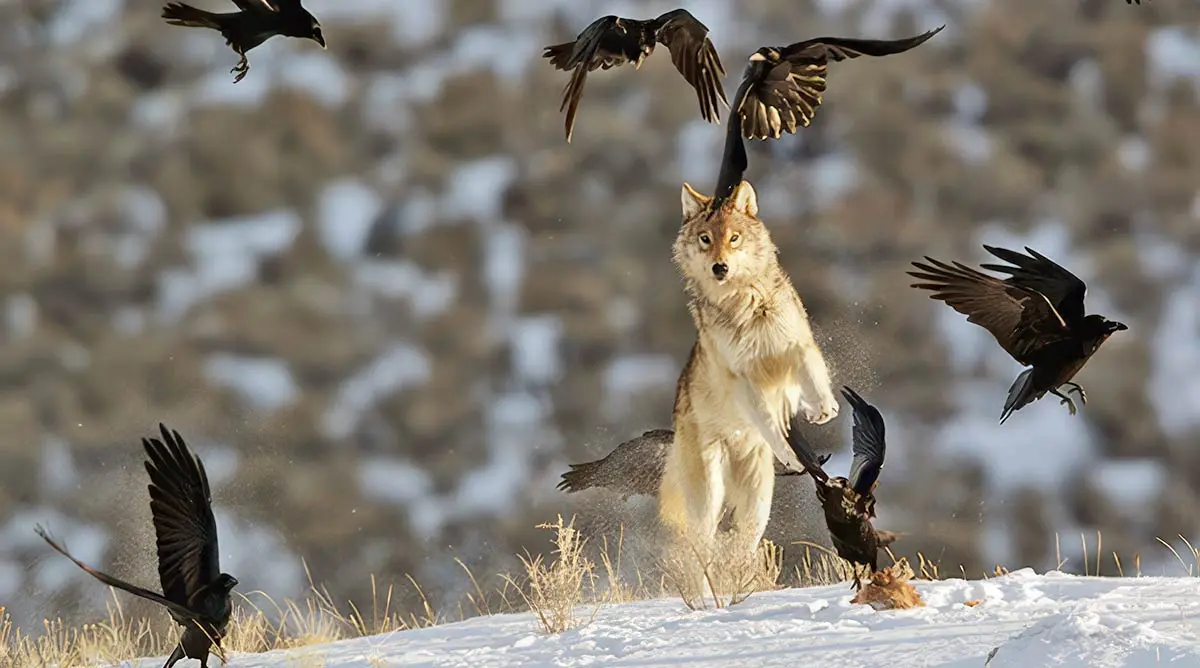
The relationship between wolves and ravens extends beyond practicality. There is evidence to suggest that these animals form social bonds and exhibit signs of companionship. Observations have shown wolves and ravens engaging in playful interactions, engaging in chase games, and mock fights. These interactions provide mental and physical stimulation for the animals and foster a sense of camaraderie between the species. The wolves and ravens may develop trust and understanding, strengthening their cooperation and reinforcing their bond.
Conservation and Ecological Implications

Understanding the intricate relationship between wolves and ravens is fascinating and crucial for conservation efforts. You can find wolves in national parks like Yellowstone and Katmai National Park and Reserve – two of the best places to see wildlife in the USA. Wolves are integral to the ecosystems, playing vital roles in maintaining ecological balance by helping to control prey populations, preventing overgrazing, and promoting healthier ecosystems. Similarly, ravens assist in cleaning up carcasses, reducing the risk of disease transmission.
By protecting habitats and promoting the conservation of these creatures, we ensure the continuation of their symbiotic relationship and contribute to the overall health of ecosystems. The preservation of wolf populations, in particular, has a positive cascading effect on other species, including ravens, as they are interdependent within the same ecological web.
Cultural Significance
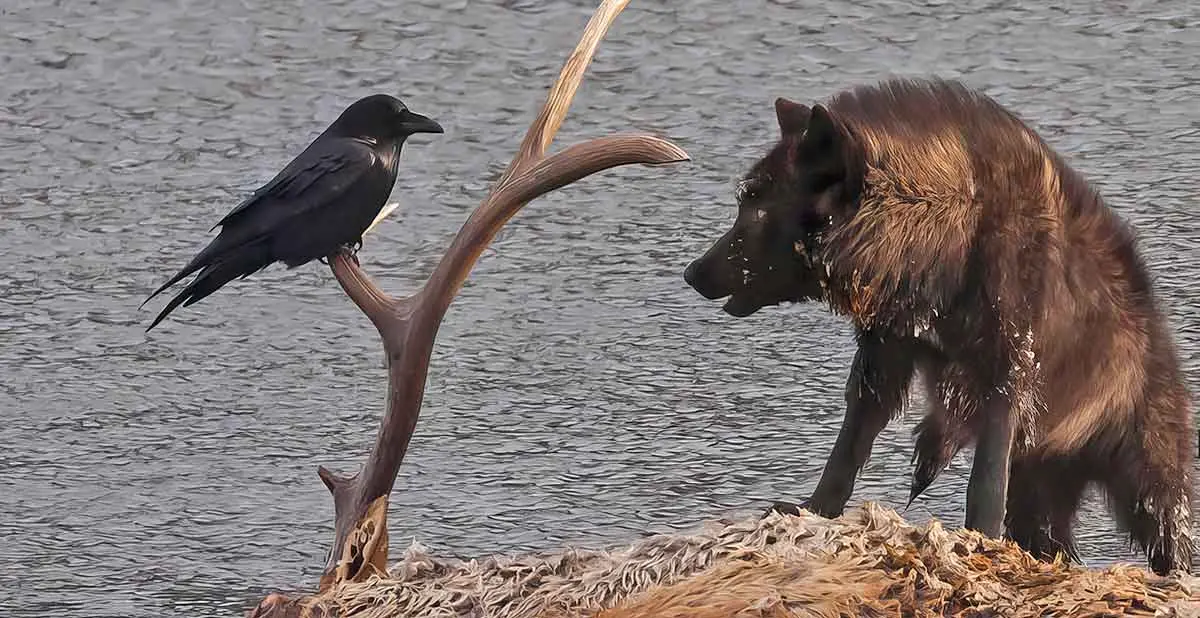
The alliance between wolves and ravens has permeated human cultures across time and geography. Many indigenous cultures revere these animals and regard them as sacred or symbolic figures. For example, Native American tribes often depict the raven as a messenger and the wolf as a wise and powerful spirit guide. Norse mythology tells how Odin’s ravens, Hugin and Munin, helped his wolves Geri and Freki to hunt down prey so that both could eat. A story that showcases that cooperation is better than trying to achieve things alone. If the six ravens at the Tower of London ever left, it is believed the tower itself and the kingdom would fall. Edgar Allan Poe immortalized the raven as a Gothic literature icon in his famous poem The Raven, published in 1845.
The significance of this relationship in folklore and mythology highlights the profound impact these creatures have had on human imagination and understanding of the natural world. By exploring the cultural significance of the wolf-raven alliance, we gain a deeper appreciation for the spiritual and symbolic connection between humans and nature.
Conclusion
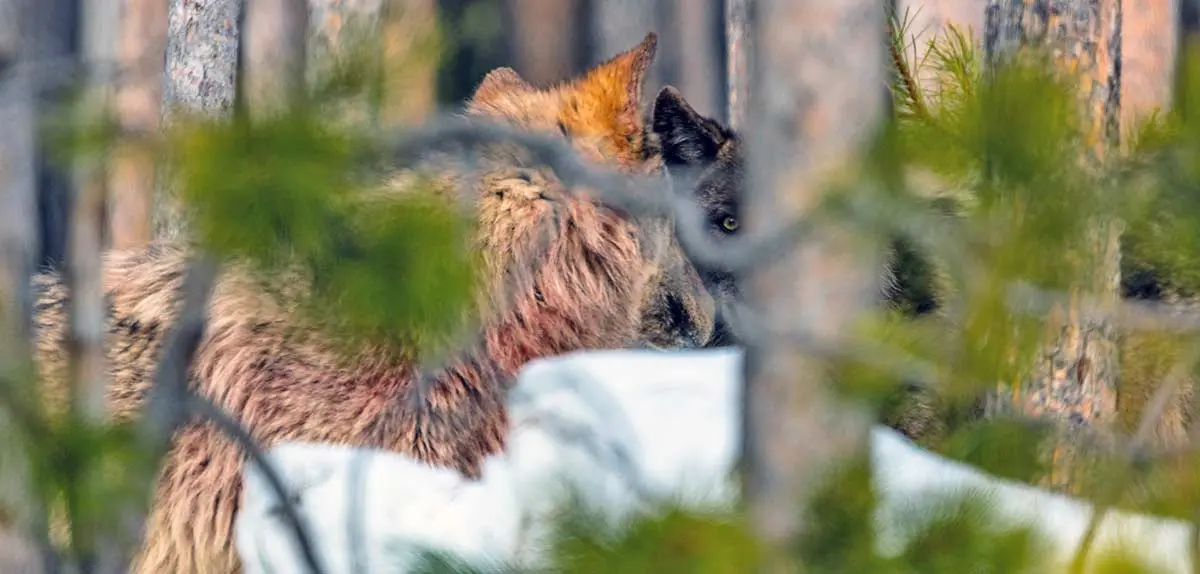
The special relationship between wolves and ravens is a testament to the intricacies and wonders of the natural world. It showcases these creatures’ remarkable adaptability and intelligence and the interconnectedness of life within ecosystems. By learning about and appreciating this symbiotic bond, we gain a deeper understanding of nature’s delicate balance and rhythm. Let us continue to marvel at the extraordinary collaborations that shape our planet and strive to preserve them for generations to come.


